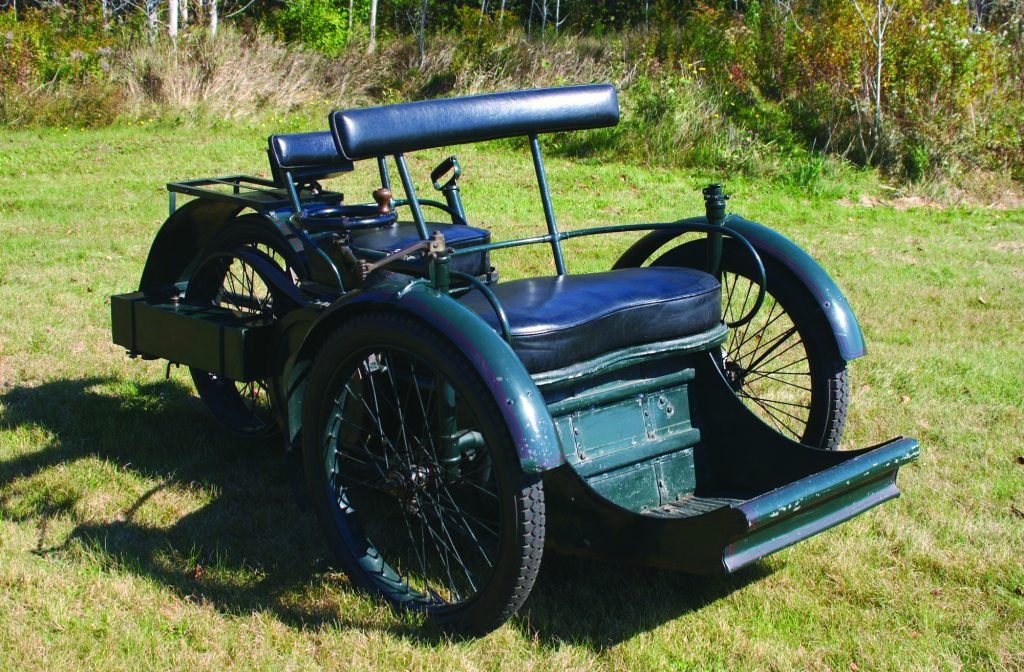1898 Léon Bollée Voiturette

Description
In the late 1800s, the Bollée family was seemingly fascinated with the idea of mechanical transportation. In the 1870s, Amédée Bollée ran a bell foundry but used his spare time to build steam powered carriages. His son, Léon (1870-1913), also became interested but focused on internal combustion engines instead of steam. In 1895, Léon patented the voiturette, a three-wheeled vehicle with a single-cylinder engine. That year, he gained exposure for his invention by entering it in the Paris-Bordeaux-Paris…
In the late 1800s, the Bollée family was seemingly fascinated with the idea of mechanical transportation. In the 1870s, Amédée Bollée ran a bell foundry but used his spare time to build steam powered carriages. His son, Léon (1870-1913), also became interested but focused on internal combustion engines instead of steam. In 1895, Léon patented the voiturette, a three-wheeled vehicle with a single-cylinder engine. That year, he gained exposure for his invention by entering it in the Paris-Bordeaux-Paris race, which is sometimes considered the first auto race. While he did not win, he was among one of the few entrants to complete the 732 mile (1178km) route.
Bollée began manufacturing the voiturette and it became popular in France and England as it was fast and nimble compared to other motor vehicles for sale in the 1890s. By the early 1900s, Bollée began building cars that following what was becoming standard for vehicles: four wheels, driver in the front, and a steering wheel in front of the driver.
